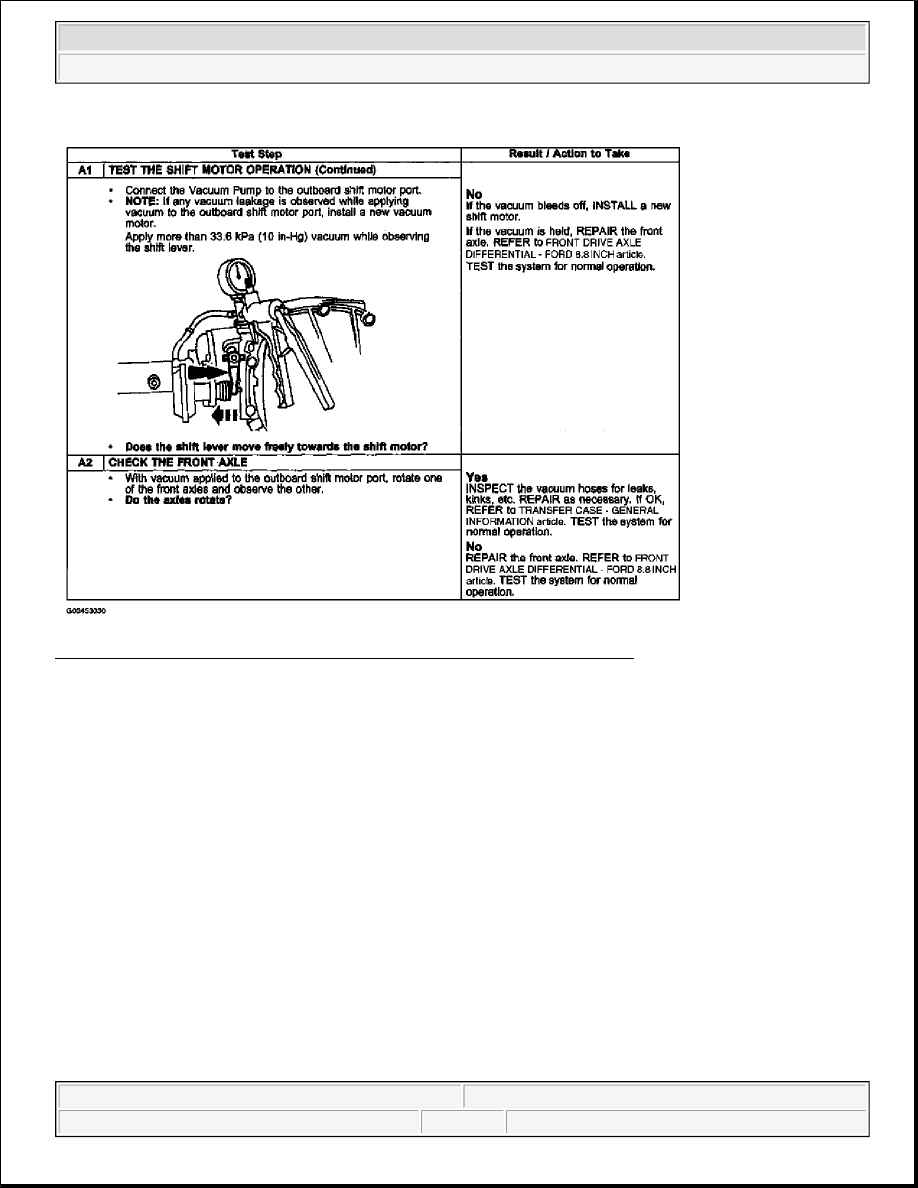Ford F150 Pickup. Instruction - part 646

Fig. 23: Pinpoint Test A: Front Axle Will Not Engage Step (A1 Cont. & A2)
Courtesy of FORD MOTOR CO.
PINPOINT TEST B: FRONT AXLE WILL NOT DISENGAGE
2003 Ford Pickup F150
2003 GENERAL INFORMATION Driveline System - General Information - F150 Pickup